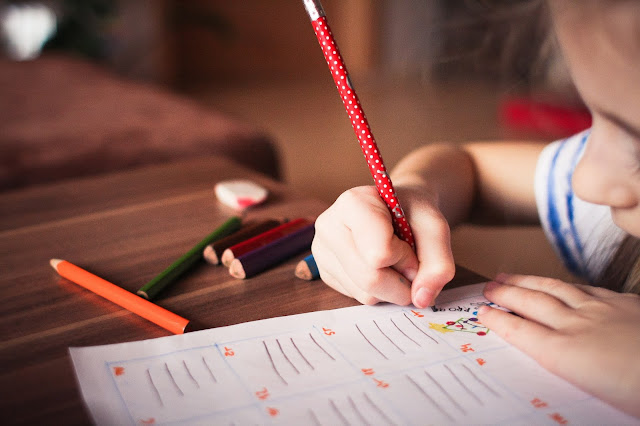One can be an intelligent teacher without being effective. Intelligence does not equate effectiveness. In this profession being effective is key. It is what defines your teaching abilities.
Being an effective teacher entails making sure every child in your class is carried along and no one is left behind. This means the teacher is operating an inclusive classroom where every child is included and have equal chance to thrive.
Every class is made up of two types of learners: The quick learners and the struggling or slow learners. Every class is tinted by these two categories and it is your responsibility as a teacher to identify the struggling learners and work with them specially.
Oftentimes, the quantum of work given by some teachers discourages the children who are slow in learning. The numbers of work given in school, including assignments and homework plays a role in how some children perceives academic activities.
A struggling learner who is constantly overworked, always battling jampacked school works in classroom or at home would get frustrated and start hating learning.
So therefore, it is important for you as a teacher to identify such learners in your class and model strategies that would accommodate them individually.
These learners doesn't have to struggle to catch up with your teaching pace. Teach slowly and mindfully with the right attitude. Patience is key in this profession. Lay emphasis over and over again. Repetition is the number one rule of teaching.
If your students struggles to catch up with your teaching pace then you not being an effective teacher.
𝙔𝙤𝙪 𝙘𝙖𝙣 𝙖𝙙𝙤𝙥𝙩 𝙩𝙝𝙚𝙨𝙚 𝙨𝙩𝙧𝙖𝙩𝙚𝙜𝙞𝙚𝙨 𝙗𝙚𝙡𝙤𝙬 𝙩𝙤 𝙚𝙣𝙝𝙖𝙣𝙘𝙚 𝙡𝙚𝙖𝙧𝙣𝙞𝙣𝙜:
1. 𝙈𝙖𝙠𝙚 𝙇𝙚𝙨𝙨𝙤𝙣𝙨 𝙎𝙞𝙢𝙥𝙡𝙚 𝙖𝙣𝙙 𝙎𝙝𝙤𝙧𝙩: This includes every other task given. Classroom lessons should be short and simpler. Divide long concepts and subjects into smaller chunks and teach them bit by bit.
2. 𝙂𝙞𝙫𝙚 𝙁𝙧𝙚𝙦𝙪𝙚𝙣𝙩 𝘽𝙧𝙚𝙖𝙠𝙨: In between lessons give the children short breaks to process the information learnt. Break such as movements break or ask them to do breathing exercises, including short outdoor activities and games are quite helpful. This will refresh their memories to continue learning.
3. 𝙂𝙞𝙫𝙚 𝙀𝙭𝙩𝙧𝙖 𝙏𝙞𝙢𝙚 𝙩𝙤 𝙎𝙡𝙤𝙬 𝙇𝙚𝙖𝙧𝙣𝙚𝙧𝙨: Pay attention to them specifically and give them extra time to process the information they have received and also to complete their tasks and assessments. Do not hurry them or rush activities.
4. 𝙆𝙚𝙚𝙥 𝘼𝙨𝙨𝙞𝙜𝙣𝙢𝙚𝙣𝙩𝙨 𝙖𝙣𝙙 𝙃𝙤𝙢𝙚𝙬𝙤𝙧𝙠 𝙎𝙞𝙢𝙥𝙡𝙚 𝙖𝙣𝙙 𝙎𝙝𝙤𝙧𝙩: Heavy work Loads makes struggling learners to see schooling as something difficult to do. And this has led to some children hating learning or developing phobia for anything related to academics. This problem accounts for high numbers of school dropouts.
5. 𝙌𝙪𝙖𝙡𝙞𝙩𝙮 𝙞𝙨 𝘽𝙚𝙩𝙩𝙚𝙧 𝙩𝙝𝙖𝙣 𝙌𝙪𝙖𝙣𝙩𝙞𝙩𝙮: Give short reasonable classwork, assignments or homework that would sit well with individual learners.
6. 𝙂𝙞𝙫𝙚 𝘾𝙡𝙚𝙖𝙧 𝙄𝙣𝙨𝙩𝙧𝙪𝙘𝙩𝙞𝙤𝙣𝙨: School works should be realistic and attainable not vague. Instructions must be clear and well understood by the learners. If not they could get confused. Unclear instructions confuses lots of children. Sometimes, they end up not doing the assignment or completing the task given because of confusion.
Make it a priority that In your class no child would get discouraged or left behind. This is what makes you an effective teacher. The classroom is like a lab where learners are cultured and the teachers are the chief laboratory officers. This means everything you do directly or indirectly affects your species one way or the other.
Plenty school works doesn't make a child intelligent or make him or her a hard worker. Less is more!
Cheers!










0 Comments